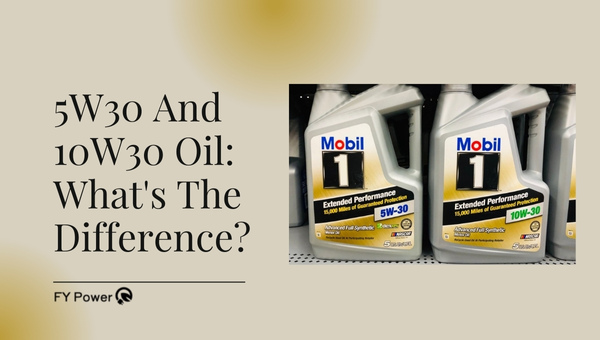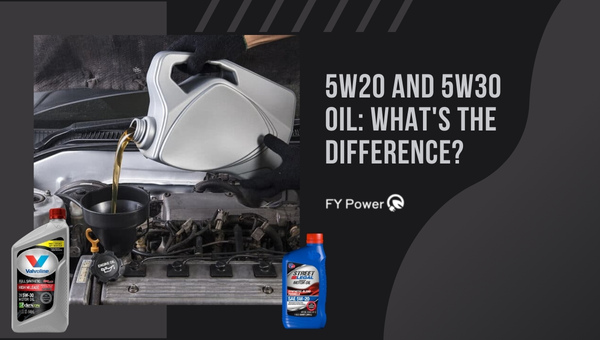When you’re thinking about stepping into the world of solar power, it’s a big leap. You want something reliable, cost-effective, and easy to set up. That’s where the WindyNation 100 Watt Solar Panel comes in as your new energy buddy. Imagine turning the sun’s rays into your very own power source—sounds like a dream, right? Well, this panel could be your first step into making that dream come true!
If you’re asking yourself whether the WindyNation panel is the solar solution you’ve been searching for, here’s what I can tell you from my experience: it packs a punch when it comes to generating power for small setups such as RVs or boats. With its user-friendly design and solid performance stats, this solar panel stands out as a solid choice for those looking to dive into renewable energy without breaking the bank.
Here’s What You’ll Discover:
- A no-fluff review packed with real-use insights
- Simple installation steps that make going green a breeze
- Trustworthy details on performance – no sugar-coating here
- The straight scoop on whether this solar panel matches its hype
- Top reasons why this WindyNation model might just be your go-to renewable energy upgrade
Dive Into the Specifications of WindyNation 100-Watt Solar Panel
Here’s a close look at what the WindyNation 100-Watt Solar Panel brings to the table:
| Specifications | Details |
|---|---|
| Brand | WindyNation |
| Material | Aluminum |
| Item Weight | 18 Pounds |
| Maximum Voltage | 12 Volts |
| Maximum Power | 100 Watts |
| Suitable for | RVs, cabins, homes, boats, back-up and remote power use |
| Power Output | 100 Watts of renewable power |
| Solar Cells | Grade A |
| Frame | Heavy-duty anodized aluminum frame |
| Product Dimensions: | 40 x 26.4 x 1.2 inches |
Unboxing Experience with WindyNation
The moment my WindyNation 100-watt solar panel arrived, I was pretty excited. This wasn’t just a parcel; it felt like the future of my power needs in a box. From the outside, the packaging looked sturdy — no dents or tears, which was reassuring.
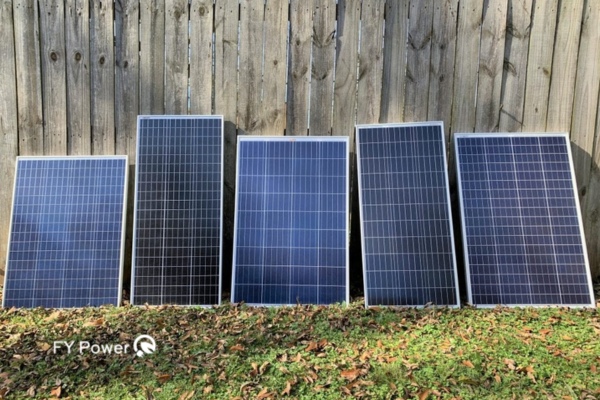
Opening the box was straightforward. The solar panel was well-protected with foam padding on all sides, minimizing any chance of damage during shipping. Alongside the main attraction were some smaller boxes holding cables and connectors neatly organized and easy to spot.
My First Encounter with the WindyNation 100-Watt Panel
I remember the day I got my hands on the WindyNation 100 Watt Solar Panel. It was like early Christmas for me, the box sitting at my doorstep whispering hints of future adventures. The excitement was real.
Opening the box was a breeze. The panel came packaged neatly and securely, ensuring no damage from its travels to my home. Every corner of the panel was protected by foam padding – a simple yet effective way to shield this energy gem from any rough handling.
The sight of the sleek aluminum frame shined up at me as I peeled back layers of protection. It felt sturdy to touch – nothing about it screamed flimsy or cheap. And there it was, encased in its protective layer: the WindyNation 100-Watt Solar Panel.
Inside, tucked beside the main attraction were small boxes containing other components indispensable for harnessing sun power: cables and connectors, all waiting patiently for their turn to shine. Each piece had its place; each seemed ready to contribute to this sustainable venture.
Carefully I lifted out each piece, inspecting them with an eye that had seen many a gadget before – wires were well insulated, and connectors fit snugly into one another without nagging gaps or forceful nudges needed. There’s no denying it – this kit was designed with attention and care.
Components included out-of-the-box:
- WindyNation 100-Watt Solar Panel
- Electrical cables (for connecting to batteries or power systems)
- Connectors (MC4 connectors for easy assembly)
And yes, not forgetting paperwork – a user manual stared up at me from beneath all of these treasures. A quick flip-through showed clear instructions in simple English; something that’s quite handy even if you think you’ve got this installation thing covered.
Pulling out each item gave me more confidence in my purchase; by appearance alone, this solar panel seemed capable and reliable.
What really caught my eye though were tiny details you might miss if you weren’t looking – pre-drilled holes on the backside of the aluminum frame making mounting options plentiful and practicality well thought out.
Also Read: Can You Run a Generator in The Rain?
Installation Journey with WindyNation Solar Panel
When I got my hands on the WindyNation 100-watt solar panel, I was eager to see how it would fit into my life. Being someone who appreciates the value of renewable energy, I wanted to make sure the installation process was smooth from start to finish.
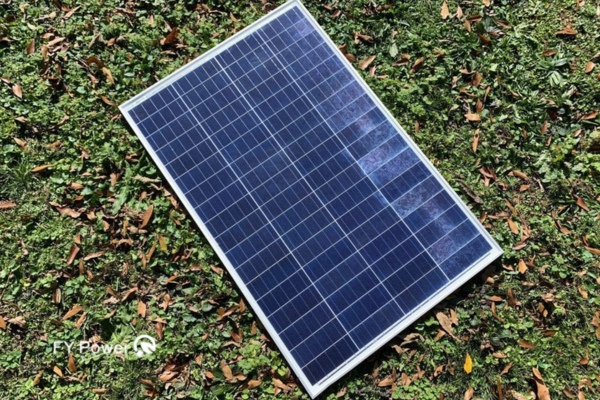
To help others who might be considering this solar panel, I thought it’d be great to share my personal experience setting it up.
Setting It Up – Step-by-Step Guide for Mounting Your New Power Source
Installing the WindyNation 100-watt solar panel was quite a straightforward process. Here’s how I did it:
- Find the Perfect Spot: First off, you need a sunny place. This could be your rooftop or any other spot that gets lots of sunlight throughout the day.
- Check for Safety: Before you climb up or start working with tools, make sure everything is safe. You don’t want any accidents.
- Unpack Carefully: Open up the box gently and take out all parts one by one. Place them carefully on a soft surface so that nothing gets scratched or broken.
- Gather Tools: You’ll need some basic tools like a screwdriver, drill, and wrenches for this job.
- Mounting Brackets Fixing: First thing first – fix those mounting brackets securely in place; they’ve got to hold your solar panel tight.
- Securing Panel on Frame: Once those brackets are in place, lay down your WindyNation panel on top and secure it onto the frame using the provided bolts and screws.
- Wiring Time: Follow instructions carefully here – connect wires from your solar panel to your power system or battery bank properly so there are no mishaps.
- Double-Check Everything: Look over all connections again just to be sure everything looks good and is tight.
Remember that through each step of this process, always follow safety guidelines and refer back to the manufacturer’s manual when needed—it’s there for your safety and make sure you set things up right.
Once up and running, this little guy started soaking in sunlight immediately—transforming those sunbeams into usable power without any complaints.
And if you’re wondering about connecting your new energy source with larger systems around your house such as backup generators, always ensure that you consult with an expert beforehand to avoid any problems down the line!
Test of Real World Performance
Let’s get real for a moment. On paper, every solar panel promises the sun and the moon, but when I lay my hands on them, that’s when I know if they can truly keep up with daily demands.
And folks, that’s exactly what I decided to do with the WindyNation 100-watt solar panel. Let me explain how I tested its actual might under the broad open sky.
Harnessing Sunbeams – The True Capacity of a WindyNation 100-Watt Panel
- Sun-Up to Sun-Down: To kick things off, I had the WindyNation panel out from dawn till dusk. We’re talking full sunlight exposure to squeezing those last rays of sunshine.
- Cloudy Days Count No sunny day favoritism here; those cloudy days saw action too. This was crucial because let’s face it – not every day is a clear sky blue.
- Real Load Test: What good is power if you can’t use it? Threw my usual devices into the mix – lights, small fridge – you know, real-life stuff while measuring how this guy held up.
- Temperature Tales: Because performance in my book includes acting cool under heat or chill. Yep! Tested this during hot afternoons and cooler evenings for that complete temperature tale.
The goal? To push this panel beyond just manufacturer specs and into everyday life where sometimes clouds roll in uninvited and temperatures swing like mood changes. It all counts when you need reliable power.
By testing it thoroughly across diverse conditions—the results turned out pretty impressive as only good craftsmanship speaks for itself through solid performance and resilience against nature’s whims.
Charging Experiences with a Mind Towards Sustainability
I’ve always been interested in how we can use the sun’s power. Using solar panels felt like the right step toward living a greener life. The WindyNation 100 Watt Solar Panel seemed like an easy way to start.
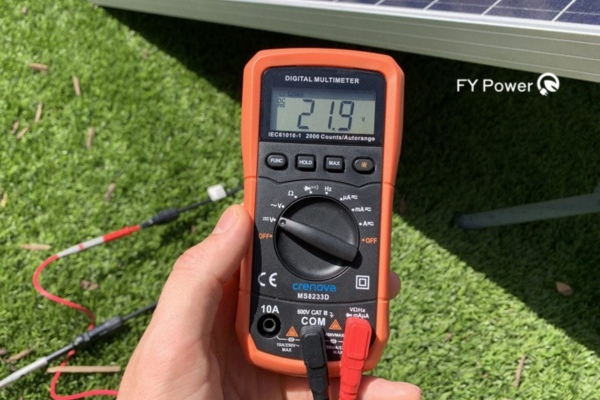
It’s a clean energy solution that does not harm our planet. My hope was to find out if this panel could really help me save on power while being kind to Earth.
My Personal Take on Charge Efficiency and Energy Reliability
Charging batteries with the WindyNation 100-Watt Solar Panel was something I looked at closely. From sunny mornings to cloudy noons, I checked how well this panel worked in all kinds of weather.
Here’s what I found:
- On Bright Sunny Days: The panel performed great, just as one would expect! It took about five to six hours to fully charge a standard 12-volt car battery.
- During Overcast Conditions: Performance dipped, but it didn’t stop working altogether. Instead of five hours, it might take all day for a full charge.
- Consistency Over Time: Day after day, I found my batteries filled up pretty reliably—even when the sun played hide and seek behind clouds.
Now here’s some advice from my side for getting the most out of your solar panels:
- Angle It Right: Try tilting the panel at an angle that catches most of the sunshine during daylight hours.
- No Shades Please: Keep it away from shadows cast by trees or buildings; even partial shade can cut down efficiency by quite a bit.
- Cleanliness Matters: A simple wipe-down now and then keeps dust and dirt from blocking out sunlight.
Pros And Cons Of WindyNation 100W Solar Panel Review
Getting your hands on the WindyNation 100-Watt Solar Panel could be a game-changer if you’re aiming for greener energy.
In this part, I’ll be straight with you about both the good bits and not-so-good bits of this solar panel. It’s all about giving you a clear picture, telling it like it is, so you can decide if it’s the right fit for your energy needs.
Pros:
- Quality Material: The panel is built with high-grade aluminum that’s meant to withstand the elements.
- Lightweight Design: Weighing in at only 18 pounds, this solar panel is easy to maneuver which makes for a hassle-free installation.
- Power Output: Delivering a solid 100 watts of energy, it lives up to its promises of offering decent power for various uses like RVs or remote cabins.
- User-friendly Warranty: With a 5-year warranty on parts and labor plus a long-term 25-year power warranty, you have peace of mind knowing your investment is protected.
- Eco-Friendly Energy: Using this panel means tapping into clean and renewable solar energy, reducing reliance on fossil fuels.
Cons:
- Voltage Limitations: At a maximum voltage capacity of just 12 volts, it might not be suitable for systems requiring higher voltage inputs.
- Installation Accessories: Not all necessary mounting accessories are provided which might mean an extra trip to the store or additional online orders.
- Weather Dependent Efficiency: While it performs well in direct sunlight, on cloudy days the efficiency can drop significantly.
- Moderate Power for Larger Needs: If you have a higher consumption need or plan to power larger appliances, a single 100W panel might fall short, and thus you would have to buy multiple units which could increase the overall cost.
- No Advanced Features: This model is pretty straightforward without advanced features like some competitors offer, such as integrated USB ports for direct device charging or smart connectivity for performance monitoring.
After putting the WindyNation 100 Watt Solar Panel through its paces, I found that it’s quite reliable within its output limitations and stands strong as an eco-friendly energy solution for smaller-scale applications.
Also Read: Who makes Predator generators?
Recommendation – Who Should Buy It?
If you’re wondering if the WindyNation 100 Watt Solar Panel is right for you, let me share with you who can reap the most benefits. I’ve broken it down into a simple list, so it’s clear and easy to follow:
- Folks with RVs or Campers: If you love hitting the road in your RV or camper, this solar panel could be a game-changer. It gives you the freedom to power up your batteries anywhere under the sun.
- Cabin Owners: Do you have a cabin off the grid? This solar panel ensures that even without traditional electric lines, your lights and gadgets stay on.
- Homeowners Interested in Saving on Electricity: For those at home looking to cut down on electric bills or add a backup power source, this 100W Solar Panel is an excellent starter piece for creating your own solar setup.
- Boat Enthusiasts: Boats need power too! With this solar panel, keeping your batteries charged while out on water becomes one less worry.
- People Living in Remote Areas: If your home is far from city lines and reliable power sources, installing these panels can make daily life easier and more consistent.
Also Read: What will a 3000-watt generator run?
Conclusion
After thoroughly exploring the WindyNation 100W Solar Panel, I have found that it stands as a robust and reliable option for anyone looking to harness solar energy. The panel’s efficiency in converting sunlight into electrical energy is impressive, while its sturdy build promises durability.
Designed with versatility in mind, it’s an ideal fit for various settings including RVs, cabins, homes, boats, and any situation where backup or remote power is necessary.
Throughout the journey of box-opening to real-world application, my overall takeaway is that WindyNation offers a blend of quality and affordability. Yes, there are areas for improvement—nothing’s perfect after all.
However, when weighing these alongside the benefits it brings to sustainable living practices; I reckon it’s an energy solution well worth considering.
